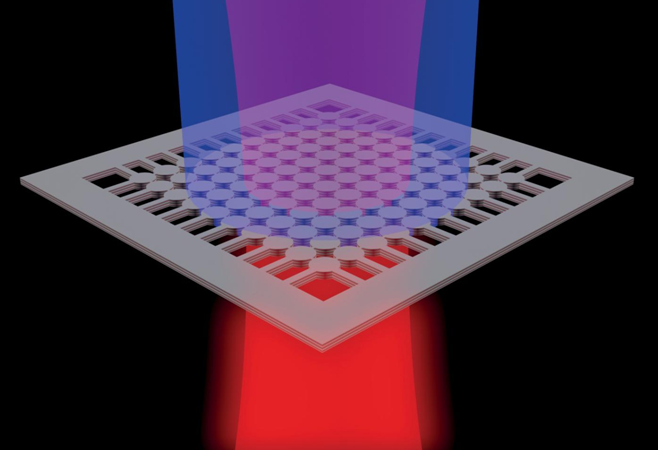
Researchers at the University of California San Diego have demonstrated the world's first laser based on an unconventional wave physics phenomenon called bound states in the continuum. The technology could revolutionize the development of surface lasers, making them more compact and energy-efficient for communications and computing applications. The new BIC lasers could also be developed as high-power lasers for industrial and defense applications.

For example, BIC lasers can be readily tuned to emit beams of different wavelengths, a useful feature for medical lasers made to precisely target cancer cells without damaging normal tissue. BIC lasers can also be made to emit beams with specially engineered shapes (spiral, donut or bell curve) -- called vector beams -- which could enable increasingly powerful computers and optical communication systems that can carry up to 10 times more information than existing ones.
Bound states in the continuum (BICs) are phenomena that have been predicted to exist since 1929. BICs are waves that remain perfectly confined, or bound, in an open system. Conventional waves in an open system escape, but BICs defy this norm -- they stay localized and do not escape despite having open pathways to do so.
In a previous study, Kanté and his team demonstrated, at microwave frequencies, that BICs could be used to efficiently trap and store light to enable strong light-matter interaction. Now, they're harnessing BICs to demonstrate new types of lasers. The team published the work Jan. 12 in Nature.
Making the BIC laser
The BIC laser in this work is constructed from a thin semiconductor membrane made of indium, gallium, arsenic and phosphorus. The membrane is structured as an array of nano-sized cylinders suspended in air. The cylinders are interconnected by a network of supporting bridges, which provide mechanical stability to the device.
By powering the membrane with a high frequency laser beam, researchers induced the BIC system to emit its own lower frequency laser beam (at telecommunication frequency).